Homepage / News Details
WHEN/HOW DO WE CHLORINATE OUR WATERS?
- Categroy:News
- Author:
- Origin:
- Release Time:2020-09-18 13:38
- Views:
【Summary】
WHEN/HOW DO WE CHLORINATE OUR WATERS?
【Summary】
- Categroy:News
- Author:
- Origin:
- Release Time:2020-09-18 13:38
- Views:
Chlorination can be done at any time/point throughout the water treatment process - there is not one specific time when chlorine must be added. Each point of chlorine application will subsequently control a different water contaminant concern, thus offering a complete spectrum of treatment from the time the water enters the treatment facility to the time it leaves.
Pre-chlorination is when chlorine is applied to the water almost immediately after it enters the treatment facility. In the pre-chlorination step, the chlorine is usually added directly to the raw water (the untreated water entering the treatment facility), or added in the flash mixer (a mixing machine that ensures quick, uniform dispersion of the chlorine). Chlorine is added to raw water to eliminate algae and other forms of aquatic life from the water so they won’t cause problems in the later stages of water treatment. Pre-chlorination in the flash mixer is found to remove tastes and odours, and control biological growth throughout the water treatment system, thus preventing growth in the sedimentation tanks (where solids are removed from the water by gravity settling) and the filtration media (the filters through which the water passes after sitting in the sedimentation tanks). The addition of chlorine will also oxidize any iron, manganese and/or hydrogen sulphide that are present, so that they too can be removed in the sedimentation and filtration steps.
Disinfection can also be done just prior to filtration and after sedimentation. This would control the biological growth, remove iron and manganese, remove taste and odours, control algae growth, and remove the colour from the water. This will not decrease the amount of biological growth in the sedimentation cells.
Chlorination may also be done as the final step in the treatment process, which is when it is usually done in most treatment plants. The main objective of this chlorine addition is to disinfect the water and maintain chlorine residuals that will remain in the water as it travels through the distribution system. Chlorinating filtered water is more economical because a lower CT value is required. This is a combination of the concentration (C) and contact time (T). The CT concept is discussed later on in this fact sheet. By the time the water has been through sedimentation and filtration, a lot of the unwanted organisms have been removed, and as a result, less chlorine and a shorter contact time is required to achieve the same effectiveness. To support and maintain the chlorine residual, a process called re-chlorination is sometimes done within the distribution system. This is done to ensure proper chlorine residual levels are maintained throughout the distribution system.
Releate News

Time of issue : 2024-05-08 13:15:35

Time of issue : 2024-04-29 13:33:08

Time of issue : 2024-04-22 08:56:03
CONTACT US
PRODUCTS
CALCIUM HYPOCHLORITE
TCCA
SDIC
BCDMH
FEEDBACK
© 1999-2018 北京网站建设有限公司 Copyright © 2012-2022 All Rights Reserved Powered by www.300.cn 冀ICP备12012949号 津公网安备 12010302002173号 Seo tag

